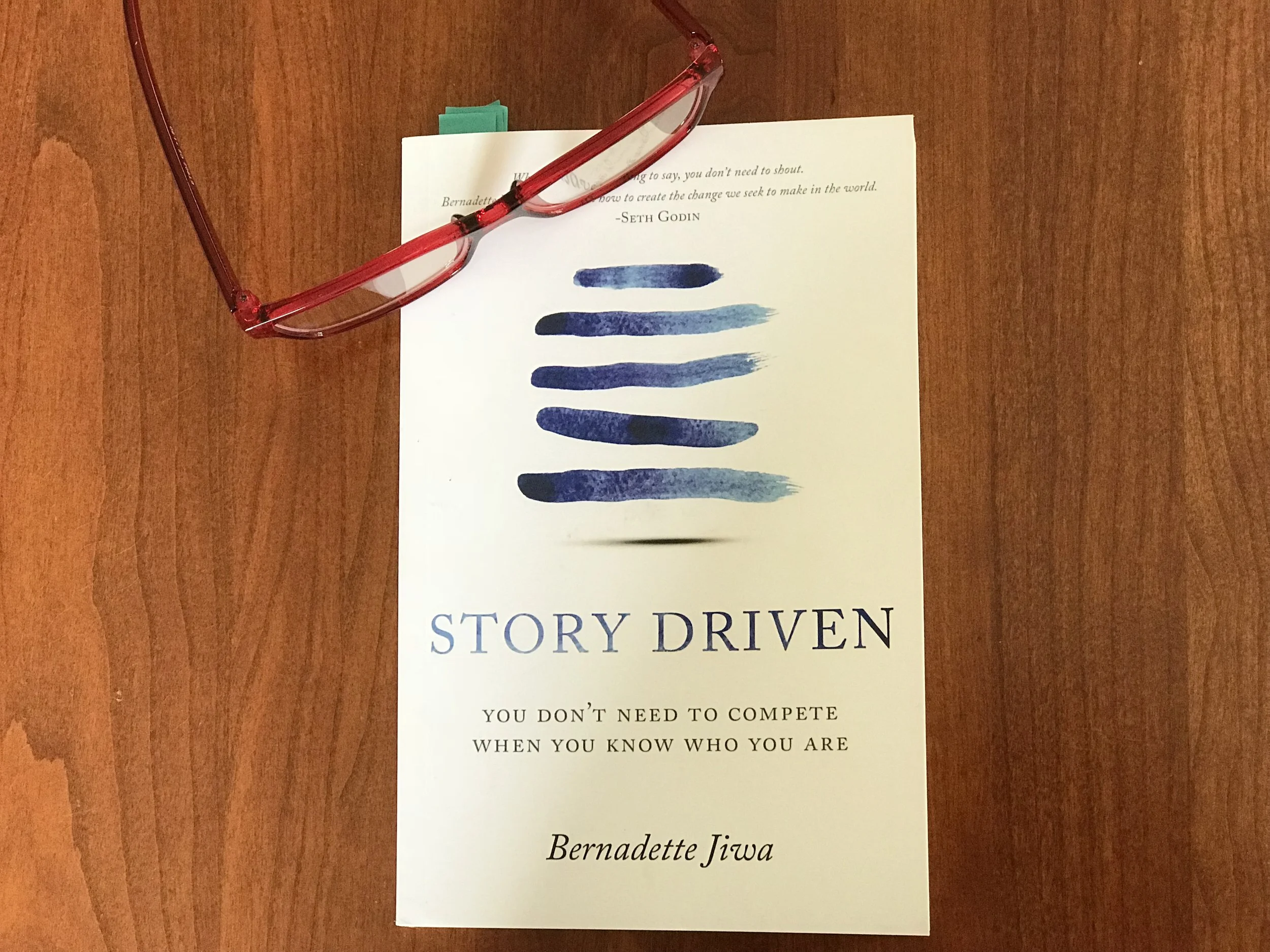A Fierce Heart isn’t a business book, but it is. Spring Washam beautifully illustrates key Buddhist teachings in a way that I find so much more accessible than other, more traditional writings. Spring Washam’s path has been messy and she offers a glimpse into how the practice looks in real life. This is not a book for yoga babes. This is a book for real people who are immersed in the good, the bad and the ugly of everyday work and life. I want to state upfront that I am in no way an expert on Buddhism, mindfulness or meditation. And that’s the point. We don’t have to be experts to reap the benefits of mindfulness, in work and in life.
I used to pride myself on not bringing my personal life to work. A wise woman once very gently called bullshit on that. It’s impossible to leave ourselves behind when we go to work. What I was actually saying, but didn’t fully understand, was that I could manage my behavior at work. Now, after more than ten years of studying Buddhist teachings and the science of mindfulness, and more than ten years of being a truly terrible meditator, I am beginning to understand.
“Meditation practice doesn’t change anything around us. It simply reminds us who we already are-and that can change everything.” -Spring Washam
Some of this is what people call “soft skills”, but they’re much harder to acquire than concrete skills like creating budgets or developing data visualizations. While everyone can benefit from simple meditation practice, not everyone will believe it can make a difference. It doesn’t matter. Doing it regularly is what creates a change. Even if you don’t “believe in it” or don’t think you’re “doing it right”. Here are three ways in which mindfulness changed my experiences at work. I hope these will help you too.
The Gift of Criticism
Few people enjoy criticism, but it is a gift. I remember my heart racing and the stomachache I had as I read the reviews for my first article in a scientific journal. Over time, my physical response to criticism diminished, but it never completely went away. Over time, I learned to use the gift of criticism to improve my work. It isn’t easy to do. Examples of unhealthy reactions to criticism are everywhere. Elon Musk threatens to privatize Tesla after criticism from the board. The President fires off threatening tweets to people and nations that criticize his actions.
Mindfulness is the difference between knee-jerk reactions and being able to act on criticism in a constructive way. It’s impossible to benefit from the gifts of critical feedback without feeling some discomfort. The key is to separate the truly constructive parts from the parts that are not helpful. At one point, I worked in an office that was encouraging staff to give each other constructive feedback. Most of the time, it worked well. One staff member would begin with “I have some feedback for _____”, then she would go on to describe everything that she found problematic in a way that often came across as petty and spiteful. Even though this person’s feedback was given in a mean-spirited way, it didn’t mean she didn’t have some good points. Being able to listen to criticism, weigh the motivations of the person giving feedback and pull out the truly relevant and constructive advice is a valuable skill to develop. The only way to improve our work is to look at it honestly and critically.
How to Accept the Gift of Criticism
Breathe
Take slow breaths as you hear or read critical comments.
Pause
Don’t speak or act immediately. Let your initial knee-jerk reactions pass before responding.
Think
Deep down, you already know the parts of the criticism that are real. Be thankful for the opportunity to improve.
Attitude of Gratitude
How many times have you found yourself at work thinking, “If only_________ would happen, then I would be happy”? If only my boss wasn’t such a jerk. If only my coworker wasn’t so lazy. If only these clients weren’t so demanding. We can’t control other people’s behavior, but we can absolutely control our responses to their behavior. And this can, ironically, cause others to respond differently to us. Once I shifted the narrative inside my head toward gratitude, everything changed. Instead of frustration, stress and anger, I cleared space for creativity and strategic thinking.
Several years ago, I worked with a client who turned out to be mentally unstable. She took a medical leave shortly after we worked together, but during our project, her crazy was in full swing. It was the most difficult consulting relationship I have ever had and I felt powerless and angry and frustrated. There was no way around this person, so I called on my gratitude practice for help. I focused on gratitude for the lessons I was learning in communication. I focused on gratitude for my good reputation, so that even if this person spoke negatively of our experience, I knew I had a solid history of good work. I spent my energy on gratitude for the stability in my life and empathy for the difficulties this person was experiencing. This didn’t make it any more fun to spend time with her, but my energy shifted from anger to compassion. My attention shifted from frustration to constructive actions that made it possible to complete the project. It sounds simplistic, but it really is that simple. It’s about putting our energy into things that help instead of things that keep us trapped.
How to Develop an Attitude of Gratitude
Think
Open and close each day with thoughts about something you are grateful for.
Speak
Incorporate gratitude into your language. Tell friends and colleagues how grateful you are to have them in your world. Start discussions with expressions of gratitude before moving on to points of disagreement or negotiation.
Believe
Eventually (it won’t take long) you will see everything through a lens of gratitude and your energy will shift to thoughts and feelings that make you feel good instead of thoughts and feelings that make you feel bad.
Stop and Smell the Roses
Shortly after I began regular meditation practice, my sense of smell went on overdrive. Suddenly I smelled every blossom, the freshness in the air, the sweetness of fresh fruit. I have a friend who would win the “least likely to meditate” award. She developed a sudden and perplexing illness and began learning about meditation and its role in stress reduction and the physical responses it elicits in our bodies. For her, it was vision that went on overdrive when she started meditation practice. Colors were more vivid and she noticed details she had never seen before.
At work, this enhanced sensory perception impacted my perception of time. Things seemed to slow down when I paused to take it all in. Those who know me will laugh at this. My childhood nickname was “aguacero”, which means rain shower in Spanish. I move fast, talk fast, think fast. There is nothing about me that is slow. Except on the inside. Suddenly, in the middle of a busy and stressful day, I would feel time stand still as I looked out at the rain outside my window. This sense of calm in the midst of the storm is important for those of us who want do to high-energy work and develop strategies for longevity. Just today, Elon Musk talked to the New York Times about the impact his work has on his personal life and his health. He sounds miserable. We can’t sprint through a marathon. Pace matters and meditation sets our pace.
How to Meditate
Breathe
You don’t have to make a big show of taking deep, cleansing breaths. Just notice your breath and slow it down. Do this before meetings, during discussions, before public speaking, or any time you want to calm your mind.
Put Down Your Tech
Next time you are in the checkout line at the grocery store, pause, breathe, put down your phone and look around. Listen to the noise, smell the food, look at the people. Take these few minutes as a gift and an opportunity to practice being in the moment when the stakes are not particularly high.
Practice, Practice, Practice
In her foundational book, How to Meditate, Pema Chodron talks about how she has been teaching meditation for more than 30 years, but she doesn’t feel like she’s very good at it. That doesn’t matter. What matters is that you keep practicing. The practice is where the change happens.









